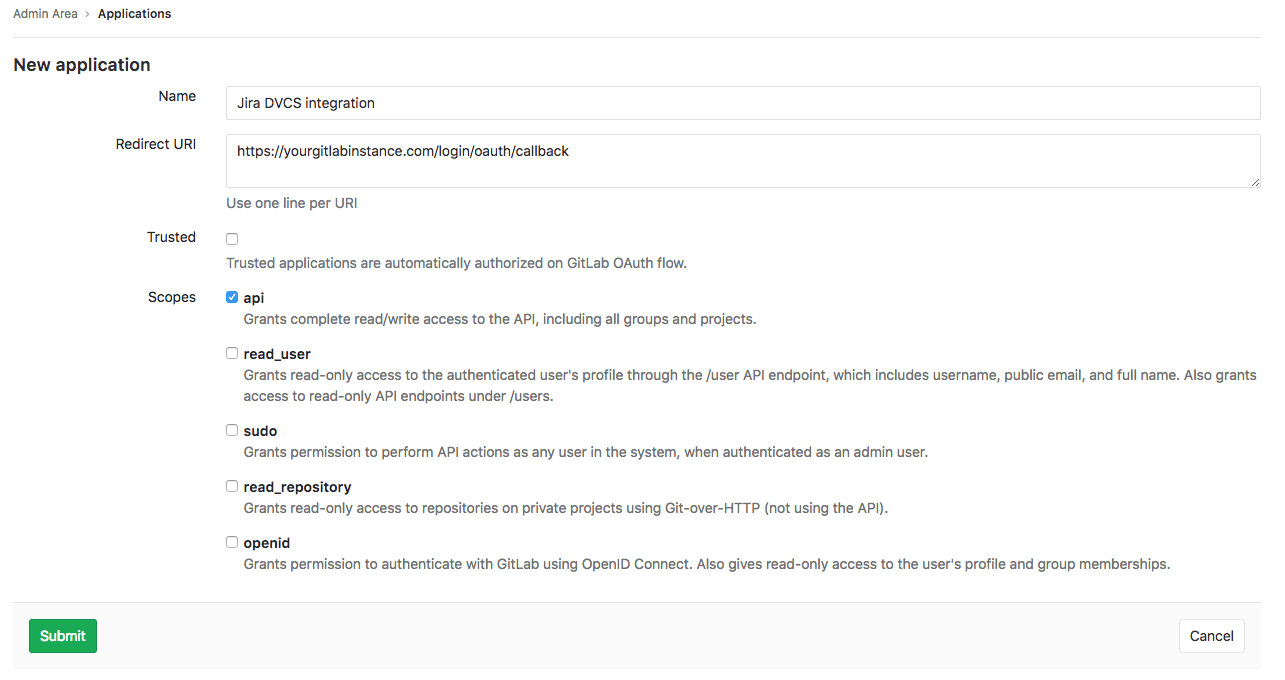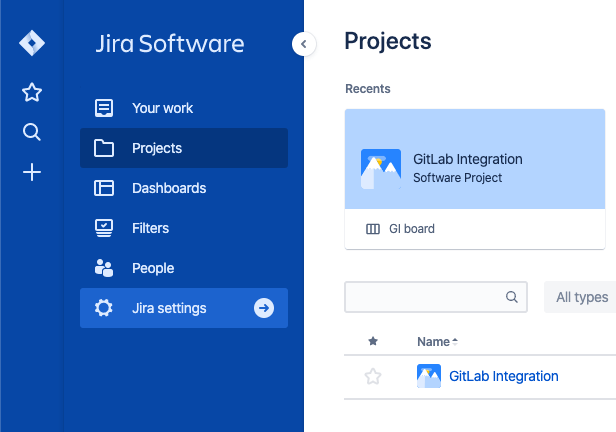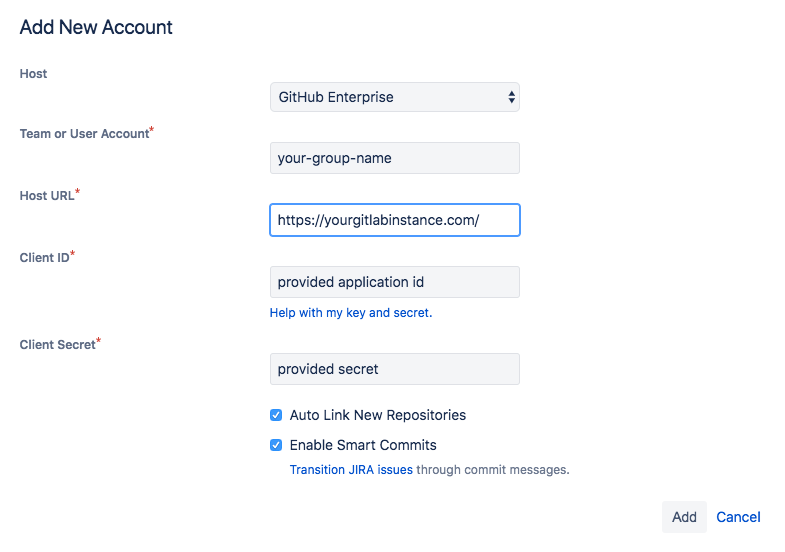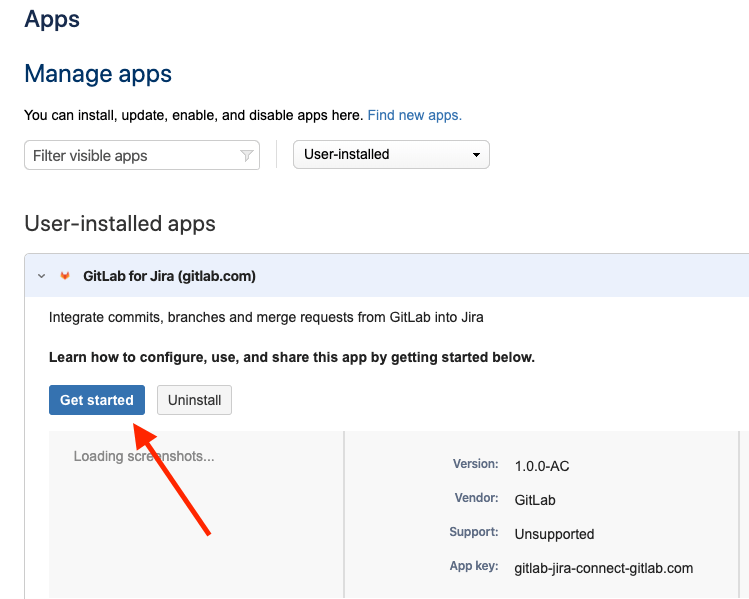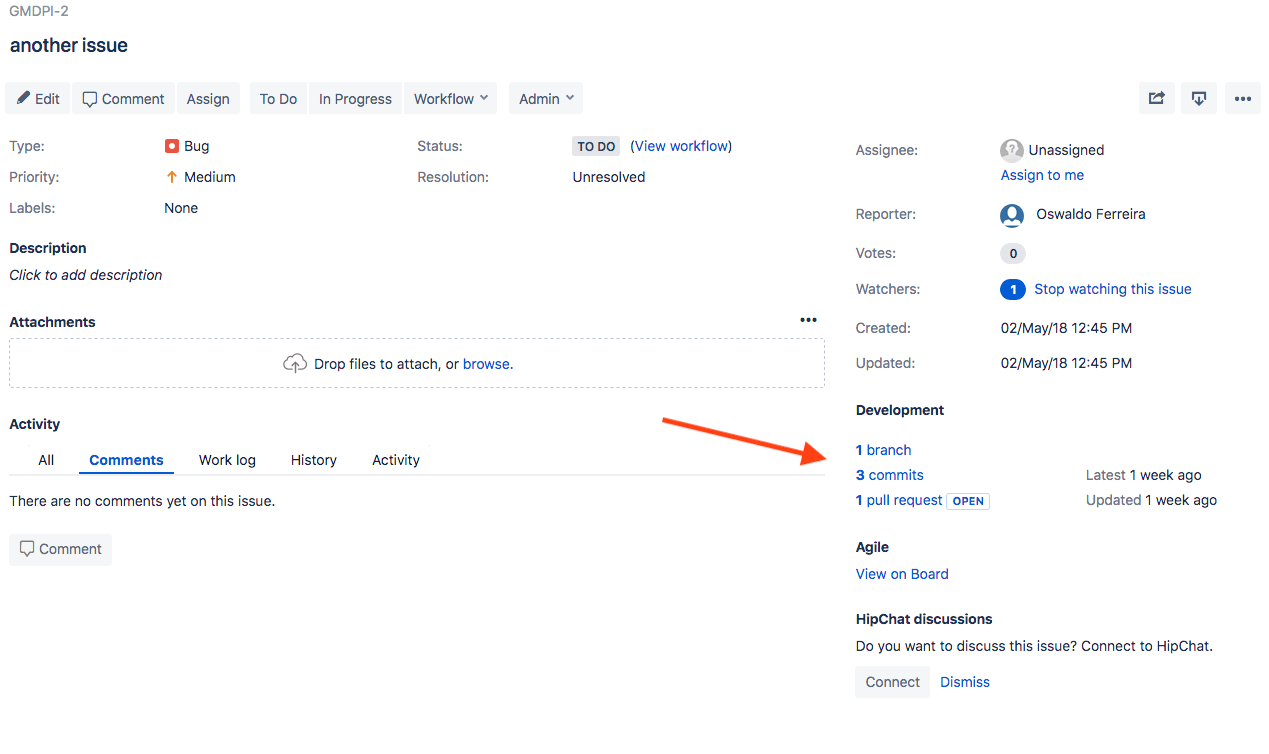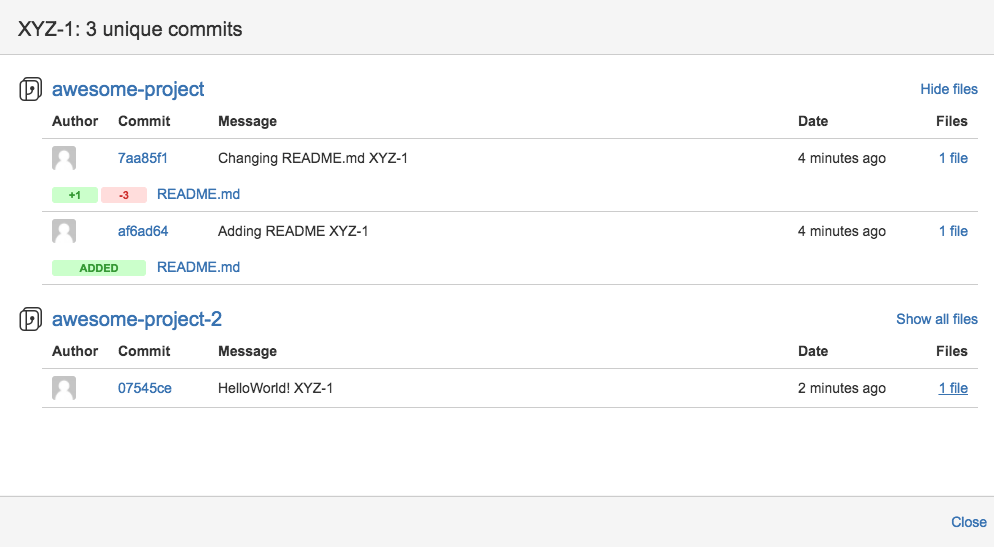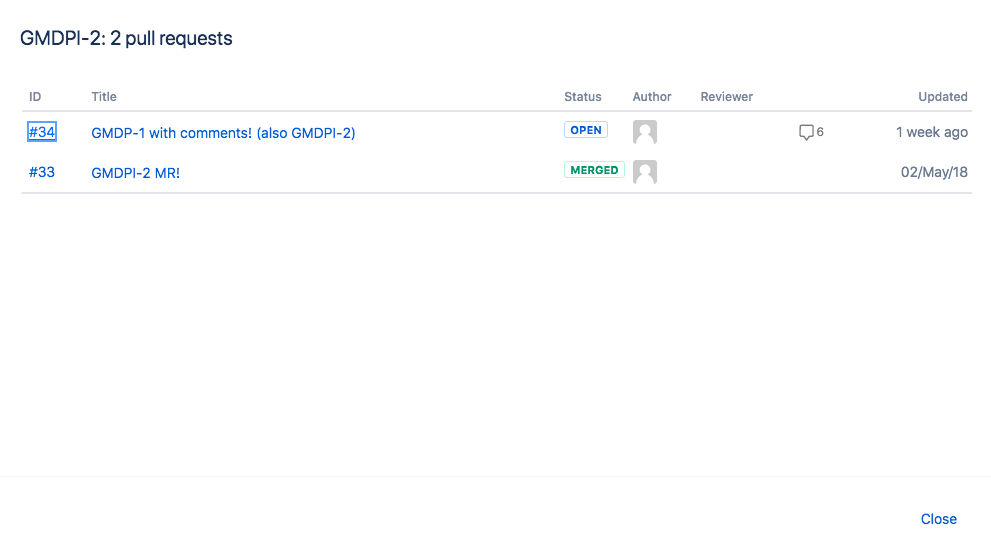GitLab Jira development panel integration (PREMIUM)
Introduced in GitLab Premium 10.0.
Complementary to our existing Jira project integration, you're now able to integrate GitLab projects with Jira Development Panel. Both can be used simultaneously. This works with self-managed GitLab or GitLab.com integrated with:
- Jira hosted by you.
- Cloud Jira.
By doing this you can easily access related GitLab merge requests, branches, and commits directly from a Jira issue.
This integration connects all GitLab projects within a top-level group or a personal namespace to projects in the Jira instance. A top-level GitLab group is one that does not have any parent group itself. All the projects of that top-level group, as well as projects of the top-level group's subgroups nesting down, are connected. Alternatively, you can specify a GitLab personal namespace in the Jira configuration, which will then connect the projects in that personal namespace to Jira.
NOTE: Note: Note this is different from the existing Jira project integration, where the mapping is one GitLab project to the entire Jira instance.
We recommend that a GitLab group admin or instance admin (in the case of self-managed GitLab) set up the integration, in order to simplify administration.
TIP: Tip:
Create and use a single-purpose jira user in GitLab, so that removing
regular users won't impact your integration.
Requirements
Self-managed GitLab
If you are using self-managed GitLab, make sure your GitLab instance is accessible by Jira.
- If you are connecting to Jira Cloud, make sure your instance is accessible via the internet.
- If you are using Jira Server, make sure your instance is accessible however your network is set up.
GitLab.com
There are no special requirements if you are using GitLab.com.
GitLab Configuration
-
In GitLab, create a new application in order to allow Jira to connect with your GitLab account
While logged-in, go to
Settings -> Applications. (Click your profile avatar at the top right, chooseSettings, and then navigate toApplicationsfrom the left navigation menu.) Use the form to create a new application.Enter a useful name for the
Namefield.For the
Redirect URIfield, enterhttps://<your-gitlab-instance-domain>/login/oauth/callback, replacing<your-gitlab-instance-domain>appropriately. So for example, if you are using GitLab.com, this would behttps://gitlab.com/login/oauth/callback.NOTE: Note: If using a GitLab version earlier than 11.3, the
Redirect URImust behttps://<your-gitlab-instance-domain>/-/jira/login/oauth/callback. If you want Jira to have access to all projects, GitLab recommends an administrator creates the Application.- Check
apiin the Scopes section.
- Check
-
Click
Save application. You will see the generated 'Application ID' and 'Secret' values. Copy these values that you will use on the Jira configuration side.
Jira Configuration
GitLab self-managed
-
In Jira, go to Jira Settings > Applications > DVCS accounts, then click Link GitHub Enterprise account to start creating a new integration. (We are pretending to be GitHub in this integration until there is further platform support from Jira.)
-
Complete the form
Select GitHub Enterprise for the
Hostfield.For the
Team or User Accountfield, enter the relative path of a top-level GitLab group that you have access to, or the relative path of your personal namespace.For the
Host URLfield, enterhttps://<your-gitlab-instance-domain>/, replacing<your-gitlab-instance-domain>appropriately. So for example, if you are using GitLab.com, this would behttps://gitlab.com/.NOTE: Note: If using a GitLab version earlier than 11.3 the
Host URLvalue should behttps://<your-gitlab-instance-domain>/-/jiraFor the
Client IDfield, use theApplication IDvalue from the previous section.For the
Client Secretfield, use theSecretvalue from the previous section.Ensure that the rest of the checkboxes are checked.
-
Click
Addto complete and create the integration.Jira takes up to a few minutes to know about (import behind the scenes) all the commits and branches for all the projects in the GitLab group you specified in the previous step. These are refreshed every 60 minutes.
Note: In the future, we plan on implementing real-time integration. If you need to refresh the data manually, you can do this from the
Applications -> DVCS accountsscreen where you initially set up the integration:
To connect additional GitLab projects from other GitLab top-level groups (or personal namespaces), repeat the above steps with additional Jira DVCS accounts.
GitLab.com
You can integrate GitLab.com and Jira Cloud using the GitLab for Jira App in the Atlassian Marketplace.
GitLab and Jira can also be integrated using the DVCS connector as described in the GitLab self-managed section. The GitLab for Jira App is recommended when using GitLab.com and Jira Cloud because data is synchronized in real time, while the DVCS connector updates data only once per hour.
For a walkthrough of the integration with GitLab for Jira, watch Configure GitLab Jira Integration using Marketplace App on YouTube.
NOTE: Note: The GitLab for Jira App is only compatible with GitLab.com and Jira Cloud.
-
Go to Jira Settings > Apps > Find new apps, then search for GitLab.
-
Click GitLab for Jira, then click Get it now. Or go the App in the marketplace directly
-
After installing, click Get started to go to the configurations page. This page is always available under Jira Settings > Apps > Manage apps.
-
Enter the group or personal namespace in the Namespace field and click Link namespace to Jira. Make sure you are logged in on GitLab.com and the namespace has a Silver or above license. The user setting up GitLab for Jira must have Maintainer access to the GitLab namespace.
NOTE: Note: The GitLab user only needs access when adding a new namespace. For syncing with Jira, we do not depend on the user's token.
After a namespace is added, all future commits, branches and merge requests of all projects under that namespace will be synced to Jira. Past data cannot be synced at the moment.
Troubleshooting GitLab for Jira
The GitLab for Jira App uses an iframe to add namespaces on the settings page. Some browsers block cross-site cookies which can lead to a message saying that the user needs to log in on GitLab.com even though the user is already logged in.
"You need to sign in or sign up before continuing."
In this case, enable cross-site cookies in your browser.
Usage
Once the integration is set up on GitLab and Jira you may refer any Jira issue by its ID in branch names, commit messages and merge request titles on GitLab's side,
and you will be able to see the linked branches, commits, and merge requests when entering a Jira issue
(inside the Jira issue, merge requests will be called "pull requests").
Click the links to see your GitLab repository data.
Limitations
- This integration is currently not supported on GitLab instances under a relative URL (for example,
http://example.com/gitlab).
